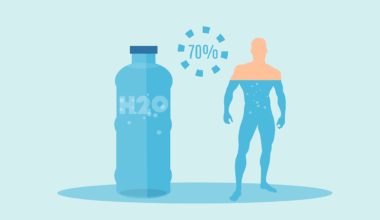Strength Training Recovery Techniques for Endurance Athletes
As endurance athletes, recovery is a crucial aspect of maintaining performance levels and preventing injury. Incorporating strength training recovery techniques into your routine can significantly enhance your effectiveness and longevity. One primary method is active recovery, which involves engaging in low-intensity exercises that promote blood flow without putting undue strain on your muscles. Activities such as walking, cycling, or swimming can be beneficial. Additionally, consider utilizing foam rolling and massage techniques to stimulate muscle recovery. Foam rolling helps alleviate soreness and stiffness, while massages can improve circulation and flexibility. Don’t underestimate the power of rest days, allowing your body to repair itself is vital after rigorous training sessions. Also, adequate hydration and a balanced diet rich in protein are essential for muscle rebuilding. Furthermore, adding ice baths or contrast baths can aid in reducing inflammation. Tools like compression garments can also facilitate recovery by increasing blood flow. Overall, blending these techniques will promote a well-rounded approach that not only supports muscle recovery but also enhances overall athletic performance.
Importance of Nutrition in Recovery
The role of nutrition in an athlete’s recovery process cannot be overstated. Consuming the right nutrients post-workout is essential for repairing muscle tissue and restoring glycogen levels. Aim for a recovery meal that contains both carbohydrates and proteins within 30 minutes of finishing your strength training session. Excellent choices include protein shakes, yogurt with fruit, or a balanced meal with lean meats and vegetables. Carbohydrates replenish glycogen stores while protein supports muscle repair and growth. Hydration also plays a key role; dehydration can slow down recovery and negatively affect performance. Including anti-inflammatory foods, such as berries, leafy greens, and fatty fish, can mitigate soreness and enhance recovery times. Some athletes benefit from supplements such as branched-chain amino acids (BCAAs), which may minimize muscle breakdown and promote recovery. Personalized nutrition plans catered to individual needs can further improve recovery outcomes. Don’t overlook the significance of micronutrients like vitamins C and E that help combat oxidative stress in the body. By prioritizing proper nutrition, endurance athletes can maximize their recovery potential and achieve optimal performance levels.
The importance of sleep in recovery is backed by extensive research; quality rest is vital for both physical and mental restoration. Endurance athletes should aim for at least seven to nine hours of uninterrupted sleep each night. Sleep stands as the time when the body actively rebuilds muscle tissue, synthesizes proteins, and releases growth hormones. Establishing a consistent sleep schedule enhances sleep quality, thus supporting your overall recovery strategy. To improve your sleep environment, consider minimizing distractions – a dark, cool environment promotes better sleep quality. Tools like blackout curtains and white noise machines can be beneficial. Limiting screen time before bed also helps to regulate sleep cycles. Consider adopting relaxation techniques such as meditation or deep breathing exercises, which can assist in winding down. Avoiding stimulants like caffeine in the evening is also an essential habit for ensuring restful nights. A well-rested athlete is often sharper mentally and physically prepared to tackle training challenges head-on. Prioritizing sleep complements all other recovery strategies, resulting in enhanced performance levels and reducing the risks of injury.
Mobility Exercises for Recovery
Mobility exercises are often overlooked yet are pivotal to recovery for endurance athletes engaged in strength training. These exercises enhance flexibility, joint health, and range of motion, which are essential for effective performance. Incorporating a dynamic warm-up before workouts and static stretching after workouts can aid in maintaining muscle elasticity and joint health. Yoga and Pilates are excellent options for improving flexibility while also providing a full-body workout that strengthens core muscles. Implementing mobility drills such as hip circles, arm swings, and ankle mobility exercises can address specific tightness and imbalances in the body. Furthermore, integrating balance exercises contributes to proprioception, aiding in injury prevention. Reserve time at least two to three times a week to focus solely on mobility work. The time spent on improving mobility will pay dividends in endurance performance. Additionally, consistency in practice is necessary for achieving lasting results. Using various tools, such as resistance bands and stability balls, can enhance traditional mobility exercises. This combination of consistent practice and diverse tools fosters a well-rounded recovery regimen, ultimately leading to superior strength and endurance.
Another critical technique for recovery is utilizing technology to track performance and recovery metrics. Devices like heart rate monitors and activity trackers provide insightful data on your recovery state, helping you adjust your training accordingly. Monitoring your sleep patterns through such devices can also indicate whether you are getting adequate rest. Implementing recovery apps can help remind you of your recovery days, hydration, and nutrition intake, offering tailored recommendations. Biofeedback tools can provide real-time data on your body’s response to activity and stress. This tracking can lead to more informed decisions regarding training intensity and volume. Understanding how your body responds to different recovery techniques is essential for optimizing performance. Wearable technology allows you to assess progress, adjust recovery methods effectively, and prevent injuries before they manifest. Moreover, consider journaling your recovery experiences, documenting what techniques yield the best results for your body. Over time, patterns may emerge that help streamline your personal recovery strategy, enhancing your training regimen. Implementing technology in recovery fosters a future-focused training approach, surpassing traditional methods significantly.
Hydration Strategies for Endurance
Hydration is a non-negotiable aspect of strength training recovery, particularly for endurance athletes. Maintaining optimal hydration levels influences the body’s ability to recover and perform effectively. Dehydration can lead to fatigue, affecting performance, so monitoring fluid intake and losses during workouts is essential. Consider using sports drinks during training sessions to replenish electrolytes lost through sweat. Post-workout hydration should focus on restoring both electrolytes and fluids; incorporating beverages that contain sodium and potassium can facilitate recovery. Remember, the general guideline is to drink at least half your body weight in ounces of water daily, adjusting for exercise intensity and duration. Assess hydration needs continually, especially in heavy training cycles or hot conditions. Prioritize water as your primary source of hydration, limiting sugary or caffeinated beverages, which can hinder recovery. Consuming foods with high water content like fruits and vegetables can also contribute to overall hydration. Using hydration tracking apps can help ensure daily goals are met. Effective hydration strategies lead to improved performance, reduced muscle cramping, and faster recovery times. Ultimately, even minor adjustments in hydration practices can significantly enhance strength training outcomes.
Lastly, recovery techniques such as yoga, deep tissue massage, and active release techniques play pivotal roles in recovery for endurance athletes. Yoga fosters greater flexibility, strength, and mental clarity, while also emphasizing breathing awareness. Incorporating yoga into your routine not only promotes physical recovery but also mental relaxation, allowing athletes to de-stress effectively. Deep tissue massage specifically targets the layers of muscle and fascia, alleviating tension and enhancing overall recovery experiences. Active release techniques employ focused pressure on tight muscles and trigger points, enabling effective muscle recovery. Athletes should ensure they find qualified therapists for deeper treatment. Engaging in these recovery modalities supports physical well-being and offers a holistic approach to overall health. These techniques should complement conventional recovery methods such as active recovery and proper nutrition. Establishing a well-rounded recovery plan that utilizes these various techniques fosters resilience in endurance training. By integrating and diversifying recovery strategies, athletes can optimize their training results while minimizing injury risks. Ultimately, a continued focus on recovery techniques will lead to enduring success in an athlete’s endurance journey.


